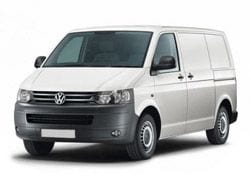Legendary Cars - Audi Quattro Sport - Sports Cars
Legendary Cars - Audi Quattro Sport - Auto Sportive
I'm not exaggerating when I say what's thereAudi Quattro Sports changed the world. Prior to 1981, in rallying, four-wheel drive vehicles were considered ineffective or even punished. The 4X4 was an SUV, not a racing car. Four-wheel drive makes the car heavier, turns worse and, if you like, even less maneuverable.
But when in 1982 the Audi Quattro Sport, equipped with a five-cylinder turbo engine with 360 hp. and all-wheel drive, debuted in the rally world, its dominance was overwhelming. Audi won the constructors' title that year, the driver's championship the following year with Mikkola, and the following year with Blomqvist. Since then, no car without all-wheel drive has won the world championship.
L'AUDI QUATTRO SPORT
But let's move on to her, the grandmother of all compact sports cars. four-wheel drive. The car that spawned the quattro versions of all modern Audis, as well as the queen of turbo lag, understeer and puffs. To make the Quattro worthy of a world rally race car, Audi had – by law – to produce a certain number of road cars. IN 5-cylinder engine The turbocharged 2.2-liter inline engine makes one of the sweetest and most unmistakable sounds. It resembles the bark of a 10-cylinder Lamborghini, but with the added nuance of the KKK turbine. The power of the road version is 306 h.p. at 6.700 rpm, torque 370 Nm delivered at 3.700 rpm.
Power comes dropped to the ground through the system four-wheel drive with three differentials, of which the central and rear are lockable. The transmission is a five-speed manual, and the wheels with 15-inch rims are fitted with modest 280-mm discs with 4-piston calipers and ABS.
The Quattro is also a fairly light vehicle considering the weight of the 4X4 drive: thanks to its 1280 kg, the car pulls away from 0-100 km / h in 4,8 seconds... In 1984 g. The Ferrari Testarossa accelerates from 5,9 to 0 km / h in 100 seconds.
The car is very unbalanced, with a heavy nose due to the engine positioned too far forward, which left the car sluggish when entering corners and understeer.
Thus, the turbo lag, like all turbocharged cars of the time, is very noticeable. For these reasons, the pilots began to brake a lot with their left foot, both to "accelerate while braking" to keep the engine running, and to "steer" the nose down with the brakes, reducing understeer for cornering. car.
All road versions were sold to select buyers at a price of 180.000 1981 liras, which in 200.000 far exceeded modern XNUMX XNUMX euros.
